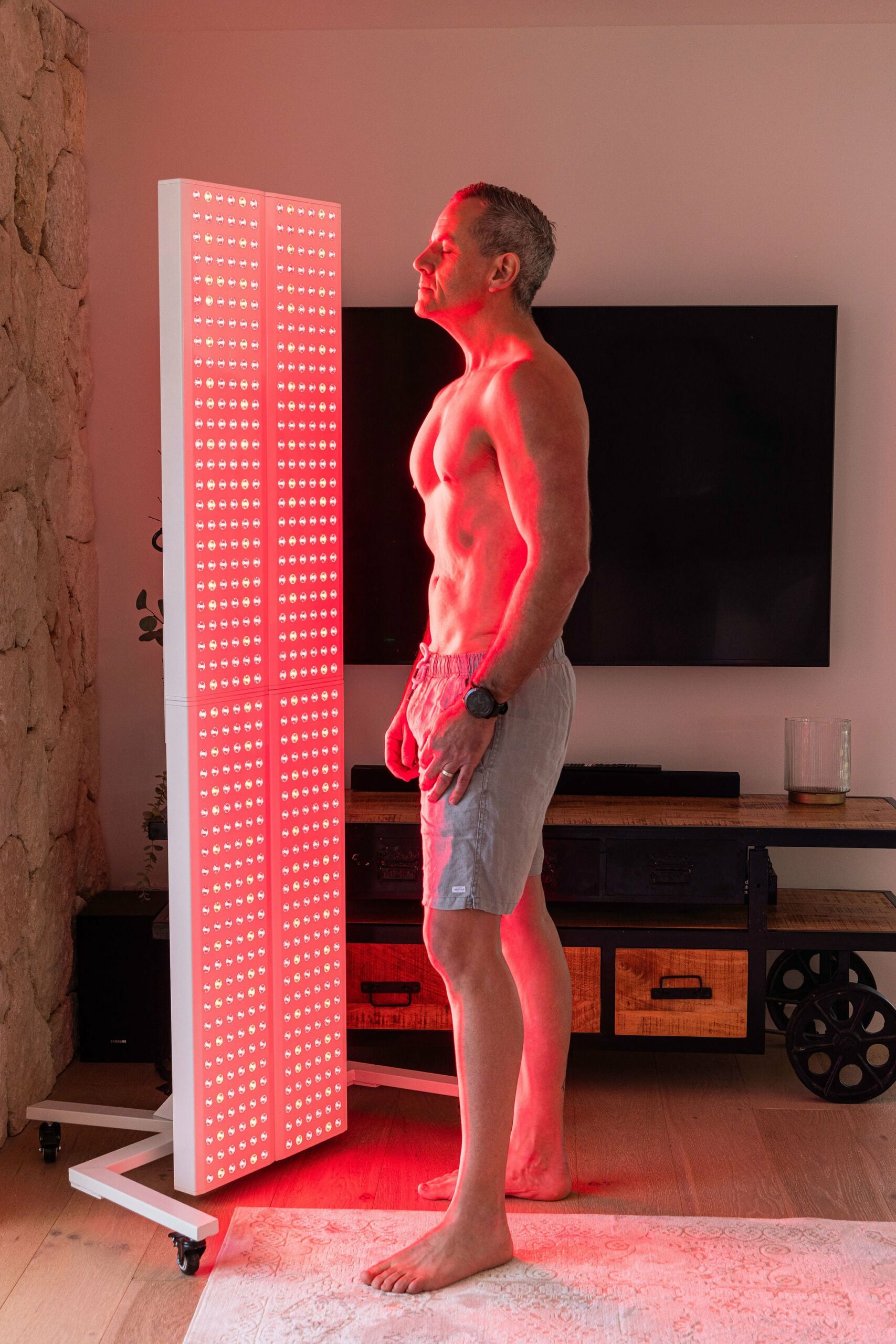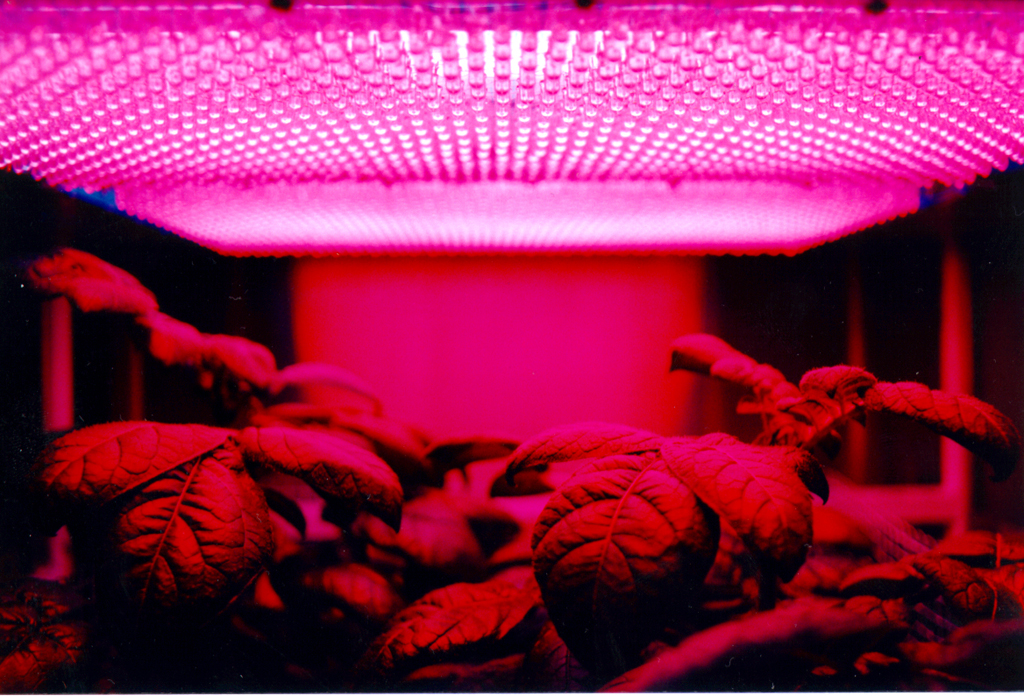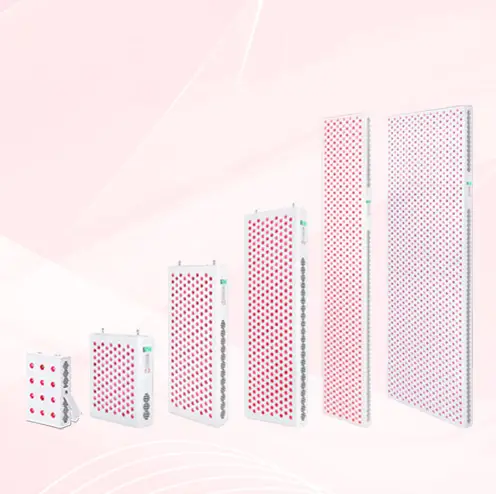What is RedDot LED?
RedDot LED specializes in an array of red and infrared light therapy solutions, encompassing everything from full-body panels and smart therapy lights to portable options and traditional therapy lights. Notably, all their devices are FDA-cleared, ensuring they meet rigorous quality and safety standards.
The health benefits attributed to their devices are extensive. Beyond cosmetic improvements like skin rejuvenation and the reduction of wrinkles, these devices also address various health concerns. They can alleviate pain and inflammation, accelerate wound and muscle healing, and even improve athletic performance and recovery times. Additionally, the therapeutic effects extend to mood enhancement and cognitive function improvement. Given the burgeoning scientific support for light therapy in medical literature, these devices represent a versatile tool for holistic wellness.
Good For:
How Do They Rate?
Pros
- Pain Relief: Effective in treating various pain conditions like arthritis, neuropathy, and musculoskeletal injuries.
- Anti-Inflammatory: Helps reduce inflammation, promoting faster healing and recovery.
- Skin Rejuvenation: Stimulates collagen and elastin production for improved skin elasticity and reduced wrinkles.
- FDA-Cleared: These devices have received FDA clearance, providing a level of trust and assurance in their safety and efficacy.
- Versatility: Offers a range of products, including full-body panels and portable lights, suitable for different needs.
- Enhanced Mood: Some studies suggest red light therapy can also improve mood and mental well-being.
- Safe to Use: Generally considered safe with minimal side effects.
- Research-Backed: Multiple studies support the various health benefits of red light therapy.
- Energy Efficiency: RedDot devices are generally energy-efficient, providing a sustainable option for long-term use.
Cons
- Cost: Initial outlay for some of the products may be not accessible for some people.
- Time-Consuming: Effective treatment often requires consistent, prolonged use, which may not be practical for everyone.
- Not a Cure-All: While effective for many conditions, it may not replace traditional treatments for severe illnesses.
- Compatibility: Not all skin types or conditions may respond positively to red light therapy.
About the Brand
RedDot LED Lighting Limited is the esteemed manufacturer behind the RedDot LED brand and is headquartered and operates its factory in Shenzhen, China. Established in 2008, the company has garnered a global reputation for producing devices of superior quality. Each of their products is backed by multiple certifications, including CE, FCC, ROHS, and FDA, underscoring their commitment to quality and safety.
RedDot LED -What are the Benefits of the devices and How Do They Work?
Red light therapy operates by directing photons into the mitochondria of cells, thereby stimulating the production of extra adenosine triphosphate (ATP). ATP acts as the cellular fuel, providing an increase in energy that has wide-ranging health benefits. This is corroborated by scholarly articles such as the one published in the Journal of Functional Foods by Ralf Jäger et al, which elaborates on the numerous health advantages provided by increased levels of ATP.
The effectiveness of the therapy is determined by the specific wavelengths of light used. RedDot LED devices predominantly utilize red and infrared light, though some specialized devices also offer additional wavelengths for targeted skin concerns.
Red light, which penetrates the skin's surface, is particularly useful for skin rejuvenation, anti-aging benefits, and wound healing. An article published in Seminars in Cutaneous and Medical Surgery by Pinar Avci, MD, et al discussed the stimulating, healing, and restoring benefits of low level light therapy for the skin.
In contrast, infrared light penetrates much deeper into the body, aiding in more extensive healing and repair, reducing pain and inflammation, and potentially ameliorating certain chronic health conditions. A study featured in Pain Research and Management by George D Gale et al highlighted the efficacy of infrared light therapy in alleviating lower back pain.
RedDot LED light therapy comes with an array of health benefits, here are some of the primary advantages you can expect:
Pain and Inflammation Relief The boost in adenosine triphosphate (ATP) aids in bodily healing and diminishes inflammation. This energy molecule also blocks key pain receptors, reducing discomfort levels. Research shows that red light therapy can effectively alleviate conditions like arthritis, neuropathy, and injuries to the musculoskeletal system. This occurs as light waves penetrate deep into the tissues, similar to the DPL wrist wrap, facilitating ATP production and consequent inflammation reduction. A comprehensive review in the European Journal of Investigation in Health, Psychology and Education by Christos Tsagkaris and Andreas S. Papazoglou, among others, supported the effectiveness of infrared light in mitigating pain.
Skin Rejuvenation and Anti-Aging Red light therapy encourages collagen and elastin production, resulting in skin tightening, increased elasticity, and the smoothing of wrinkles, lines, scars, and abrasions. Additionally, the therapy elevates hyaluronic acid levels, providing deep hydration and combating skin dryness. Much like the effects mentioned in Lightstim acne reviews, red light therapy aids in enhancing skin firmness and elasticity through increased collagen and elastin. A study involving 30 sessions by Alexander Wunsch and Karsten Matuschka in Photomedicine and Laser Surgery found an increase in collagen synthesis and a visible reduction in wrinkles and fine lines.
Wound and Tissue Healing
The substantial elevation in cellular energy provided by red light therapy promotes healing of surface-level wounds as well as deeper muscle and tissue repair. Research from a review published by the Brazilian Society of Dermatology, authored by Maria Emília de Abreu Chaves and others, supports the wound-healing capabilities of low-power light therapy, both laser and LED based.
Quick Facts & Features
| Brand | RedDot LED |
|---|---|
| Product | RDPRO300 / RDPRO1500 / RDPRO3000 / RDPRO6000 / RDS500 / RDS1000 / RDS1500 / RD60 / RD500 / RD1000 / RD1500 / RDMAX / RD6000 Wearable Devices: SC1028 Mask / RD7 Mask / E49 Mask / SD008 Mask / SD049 Mask / YD001 Belt / YD002 Belt / YD004 Belt / YS018 Belt Others: EST-T1 Panel / EST-X2 Lamp / RD30 Lamp / Sauna One / H100 Torch Stands: Aerodynamic stand / Motorized stand / Universal arm stand / Horizontal stand / Vertical stand / Floor stand |
| Form | Infrared and Red Light Panels, masks, belts and traditional lamps |
| Saftey | FDA-approved technology, Class II medical devices |
| Age | Adults |
| Skin Type | All types |
| Benefit | Skin rejuvination, reduces discomfort and swelling, elevates mood, promotes cognitive well-being, optimizes workout results and recuperation, among others. |
| Price | On request from manufacturer |
| Shipping | On request from the manufacturer |
| Warranty | 3-5 years warranty |
| Purchase | Official website |
How to Use It?
Each device comes with its own set of guidelines detailed in the included manual. Make sure to review these instructions thoroughly prior to operating the device.
Safety
Scientific studies indicate that red light therapy is generally a low-risk technology with minimal adverse effects. RedDot LED products are manufactured under rigorous safety standards.
Any Side Effects?
While generally considered safe, there are some potential side effects to be aware of when using light therapy devices. These can include mild skin irritation and eye discomfort from the bright light, both of which are generally short-lived. Some users may also experience a temporary feeling of warmth during or just after a session, as well as brief bouts of fatigue. Additionally, if you have existing medical conditions or are taking certain medications, it's advisable to consult your healthcare provider before beginning light therapy to ensure it's appropriate for you.
Reviews From Users
We went through reviews posted online by users and it is clear that they overwhelmingly expressed satisfaction with the effectiveness of the product. Below is a selection:

— Chery S.

— Claire M

— Nicole. B

Frequently Asked Questions
Are RedDot LED Lights products FDA-approved?
Yes, RedDot LED Lights' range of red light therapy panels is FDA-cleared and manufactured under strict safety guidelines.
What kind of health benefits can I expect?
Users have reported a wide range of benefits including pain reduction, skin rejuvenation, anti-aging effects, and improvement in mood and cognitive function.
Are there any side effects?
Generally, red light therapy is considered safe. However, some individuals may experience mild skin redness or sensitivity after treatment. It's advisable to consult with a healthcare provider if you have specific medical conditions or concerns.
How long does it take to see results?
Results vary depending on the individual and the condition being treated. Some users report noticeable benefits within a few weeks, while others may take longer.
Do I need to wear protective eyewear?
Direct exposure to bright light may cause eye sensitivity. Some devices come with protective eyewear, or it's recommended to keep your eyes closed during the session.
How often should I use the device?
The frequency of use may vary based on the specific device and the condition being treated. It's important to follow the instructions provided with your specific RedDot LED product.
Are there any contraindications for using red light therapy?
Individuals with specific medical conditions or those on certain medications should consult their healthcare provider before starting light therapy.
What is the warranty and return policy?
Warranty and return policies can vary, so it's best to check the specific terms for the RedDot LED product you're interested in directly with the retailer.
Conclusion
RedDot LED Lights is a reputable brand specializing in a diverse array of red light therapy devices, ranging from expansive full-body panels to smaller, specialized units for targeted treatment, as well as facial masks aimed at skin rejuvenation. Crafted under rigorous safety standards, these FDA-approved devices deliver an array of health advantages, much like Trophy Skin's blue light devices that effectively address acne, wrinkles, and fine lines.
Customer feedback for RedDot LED Lights is overwhelmingly positive, echoing satisfaction with both the quality of the products and the extensive health benefits they offer. The general consensus among users is that the devices provide value that far exceeds their cost. Adhering to strict manufacturing guidelines, RedDot LED ensures that each of its red light therapy panels meets high-quality standards. For those interested in exploring further, our comprehensive article on the top red light therapy devices of the year offers additional recommendations.
Red light therapy is a type of therapy that uses red or near-infrared light to treat a variety of conditions. During a red light therapy session, a person is exposed to a specific wavelength of red or near-infrared light that is delivered through a light-emitting device. The light penetrates the skin and reaches the cells within the body with a range of therapeutic effects.

Red light is a type of visible light, Its wavelength falls between approximately 630 and 700 nanometers (nm) on the electromagnetic spectrum. Red light is often used in light therapy treatments for the skin, as it has been shown to have the most beneficial effects on skin cells and collagen production.
Near-infrared (NIR) light, on the other hand, has a longer wavelength than visible red light and falls between approximately 700 and 1200 nm on the electromagnetic spectrum. NIR light is not visible to the human eye, but it can penetrate deeper into the skin and other tissues than visible light, making it useful for a variety of therapeutic applications ranging from wound healing to inflammation reduction or improved circulation, among other benefits.
Different Red Light Therapy devices usually deliver slightly different wavelength ranges that research has shown to be the most effective for the concern they are being recommended for.
Red Light Therapy (RLT) strengthens the mitochondria, the cell’s powerhouse, where cell energy is created. Adenosine Triphosphate (ATP) is the critical energy-carrying molecule that is found in all living organisms. By optimizing the function of the mitochondria, more ATP is produced and with increased energy cells can function optimally.
This scientific breakthrough resulted in scientists discovering Red Light Therapy’s ability to stimulate and speed up tissue repair and growth. Red Light Therapy is now widely used for maintaining a healthy complexion, speeding up muscle recovery, reducing inflammation, improving sleep, treating neurological conditions, balancing hormones, treating pain, and even losing weight.
Research has also indicated that Red Light Therapy can help to restore cellular balance and alleviate the negative impact of blue light exposure. The prevalence of blue light in our society has become a growing concern as many individuals spend prolonged periods of time looking at screens on a daily basis.
Red Light Therapy (RLT) is also called:

Low-Level Light Therapy (LLLT), Photobiomodulation (PBM), Cold Laser Therapy, Photonic Stimulation, Low-Power Laser Therapy (LPLT), Phototherapy
A Brief History of Red Light Therapy
The journey of Red Light Therapy (RLT) has been both fascinating and impactful, starting from its humble origins in the late 19th century. Dr. Niels Ryberg Finsen, the pioneer in light therapy, made a groundbreaking discovery in 1896 that light could be harnessed to treat Lupus Vulgaris, a form of tuberculosis affecting the skin. His work, which led to the tangible healing of skin lesions, was so revolutionary that he received the Nobel Prize in Physiology in 1903.
Fast forward to 1960, Theodore H. Maiman invented the first operational laser, fulfilling Albert Einstein's theories on the principles of lasers laid out in 1917. This invention opened new avenues for RLT, allowing more precise applications.

NASA took an interest in Red Light Therapy in 1987, conducting experiments to examine its effects on plant growth in space missions. These studies hinted at RLT's potential to benefit not just human health but also broader ecological systems.
In the same vein, Endre Mester's work in 1967 set the stage for modern RLT applications.
His experimentation with low-level laser therapy on skin cancer effects demonstrated the technique's efficacy and led to FDA approval for wound healing in 2002.
The advent of LED technology in the 1990s was a game-changer, offering an efficient and cost-effective alternative to traditional light bulbs. This technological leap made light therapy more accessible to the general public, including its use in sports medicine where physical therapists reported quicker recovery times for sports-related injuries.

One of the most recent and exciting developments in RLT is its potential role in weight management. Studies indicate that Red Light Therapy can influence hormones like Leptin and Ghrelin, which play key roles in regulating appetite and metabolism. This makes RLT a promising avenue for non-invasive weight loss treatments.
As RLT continues to evolve, its applications keep expanding, crossing multiple disciplines from medicine to ecology. Researchers are continuously probing its potential, finding new ways to apply this age-old yet ever-advancing technology.
Our articles exclusively rely on primary sources of information, encompassing peer-reviewed medical journals and esteemed academic institutions.
- Health And Ergogenic Potential Of Oral Adenosine-5′-Triphosphate (ATP) Supplementation: https://www.sciencedirect.com/science/article/pii/S1756464621000062
- Infrared Therapy For Chronic Low Back Pain: A Randomized, Controlled Trial: https://www.ncbi.nlm.nih.gov/pmc/articles/PMC2539004/
- What Is Red Light Therapy? Effectiveness, Benefits, Uses, Risks (prevention.com)
- Low-Level Laser (Light) Therapy (LLLT) In Skin: Stimulating, Healing, Restoring: https://www.ncbi.nlm.nih.gov/pmc/articles/PMC4126803/
- Infrared Radiation in the Management of Musculoskeletal Conditions and Chronic Pain: A Systematic Review: https://www.ncbi.nlm.nih.gov/pmc/articles/PMC8946909/
- A Controlled Trial To Determine The Efficacy Of Red And Near-Infrared Light Treatment In Patient Satisfaction, Reduction Of Fine Lines, Wrinkles, Skin Roughness, And Intradermal Collagen Density Increase: https://www.ncbi.nlm.nih.gov/pmc/articles/PMC3926176/
- Effects Of Low-Power Light Therapy On Wound Healing: LASER X LED: https://www.ncbi.nlm.nih.gov/pmc/articles/PMC4148276/
- Low-Level Laser Therapy for Fat Layer Reduction: A Comprehensive Review: https://www.ncbi.nlm.nih.gov/pmc/articles/PMC3769994/
- Photobiomodulation In Human Muscle Tissue: An Advantage In Sports Performance?: https://www.ncbi.nlm.nih.gov/pmc/articles/PMC5167494/




